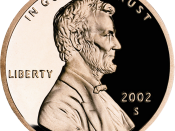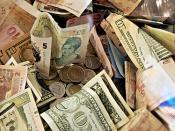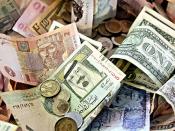Audience Analysis Summary
Being a finance and entrepreneurship major, I overestimated the audience's financial knowledge. Originally, I had planned on speaking about hedge funds. After reviewing my audience surveys, however, I realized that a more comprehensive financial topic would better suit my speech. Over 90% of the class feels that their knowledge of the US stock market falls below the midpoint on a scale of 1-10. After gaining this insight, I reassessed my speech goals and objectives. Currency is the underlying facet of all financial markets and economies. I feel that a basic overview of how currency works is something that everyone can relate to and benefit from.
General Purpose
To inform
Topic
How currency works
Specific Purpose
- To teach audience members about the purpose of currency; about the development of currency over time; and also about the economics involved in inflation.
Thesis
Money, over many years and in many forms, has served as a substitute for trade and has been used to create and measure wealth in society.
Introduction
I. Before I begin, I would like mention that the information gathered for this speech was gathered primarily from the following sources: Glyn Davies' book, History of Money from Ancient Times to the Present Day, communitycurrency.org, and federalreserve.gov.
II. (attention-getter) So - Who here has a dollar on them?
III. Currency seems like a very simple idea.
IV. In a macro sense, however, the development of currency has shaped human civilization as we know it.
V. Today we will talk about the purpose of currency; we will learn about the development of currency over time; and also touch on the economics involved in inflation.
Body
I. (transition) First let's establish the purpose that money serves us.
Currency, or money, can be defined as a unit of purchasing power.
Besides serving as a substitute in trades, money's other important use is as a store of wealth.
II. (transition) Now, let's talk about how currency has changed, from the earliest coins all the way to Internet banking.
The forms and functions of currency have changed over the last 3,000 years or so, generally falling into four categories: commodity currency, coins, paper money, and electronic currency.
1. In a commodity system, the money used is not only a "place-holder" for purchasing power, but it is something that has an inherent value by itself.
2. The first coins were minted in Lydia, an ancient empire in the area of modern Turkey. An important effect of coins was that governments now controlled the release of money into the market. They could also manipulate the money supply.
3. The idea of paper money came from goldsmiths, who often gave people bills of receipt for their gold. The bills could be exchanged for the gold at a later date. That's an important fact in the development of paper money, because it means that the money represented a real amount of gold or silver that actually existed somewhere.
4.Since money is really just a representation of value, it didn't take long for people to realize they could just send information about money by telegraph or other electronic means, and it was just as "real" as sending the money itself.
There are three important developments in the history of electronic money:
a. Diners Club issued the first credit card in 1950.
b. The Social Security Administration first offered automatic electronic deposit of money into bank accounts in 1975.
c. And finally, the growing worldwide acceptance of the Internet has made electronic currency more important than ever before.
III. (transition) Now that we have covered the purpose and brief history and developments in currency, it is important that we touch on the effects that inflation has on money.
A. You may have heard your parents or grandparents talk about how different things were when they were your age.
B. Inflation is when a certain form of currency starts to have less value over time. It is caused mainly by two things: people's perception of value, and the economic principle of supply and demand.
1. People's perceptions of a currency's value can affect its value.
2. Supply problems have had far more dramatic inflationary effects.
Conclusion
I. (transition) (pause) Today we have learned about currency's purpose as a substitute for trade and how it creates wealth. We covered the different forms of currency and how they have changed over time. We learned about how the value of your dollar changes due to the effects of inflation along with the causes of inflation.
II. In your handout, which you can now take a look at, you can learn more about the history and major milestones in the development of currency in the United States.
III. I hope this has given you an insight on the management of wealth and power.
IV. As author and editor, Lewis H. Lapham said, "The complex mechanisms of the modern world depend as certainly on the faith in money as the structures of the medieval world depended upon faith in God."
Bibliography:
.
Federal Reserve. .
.


